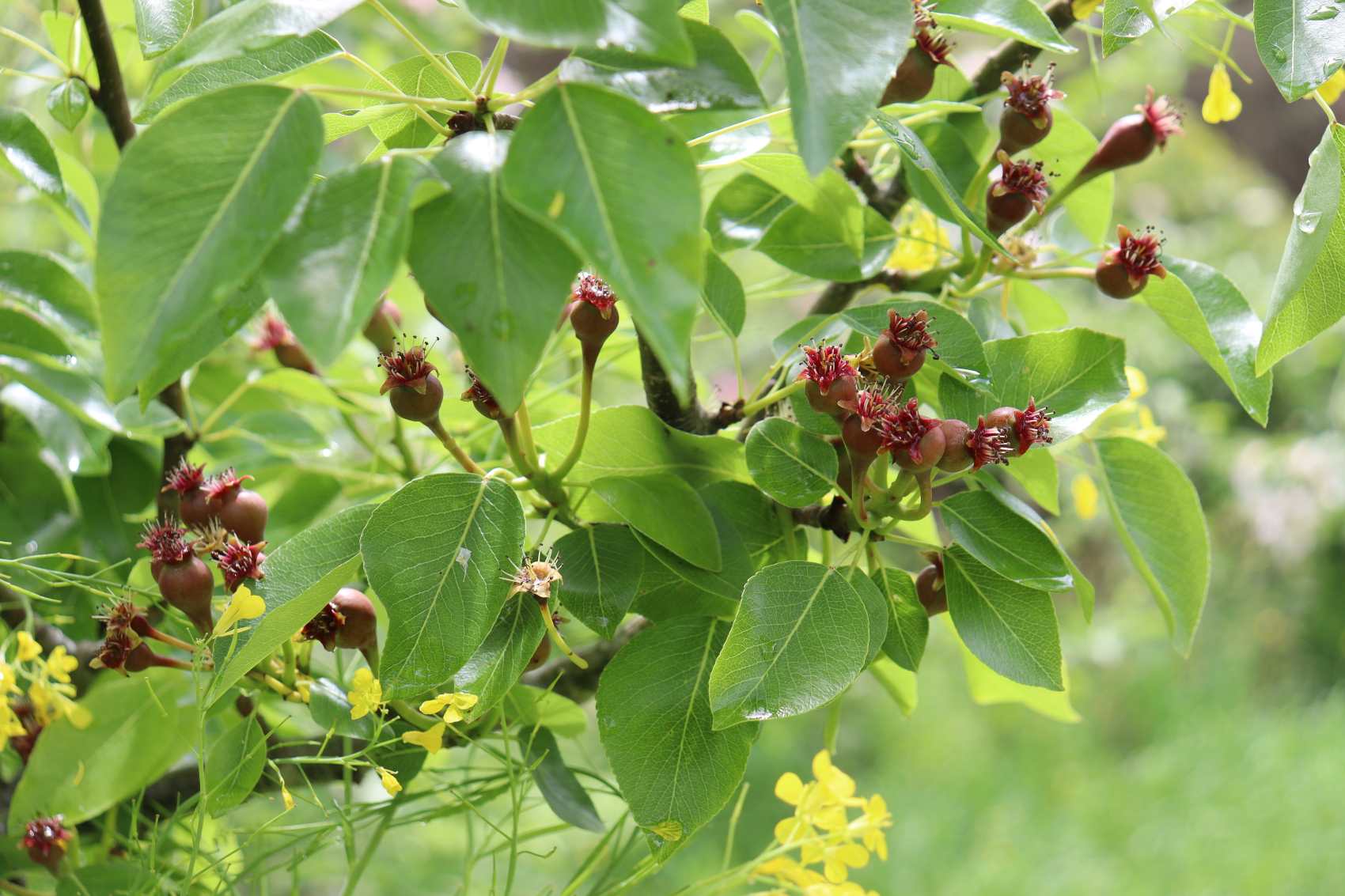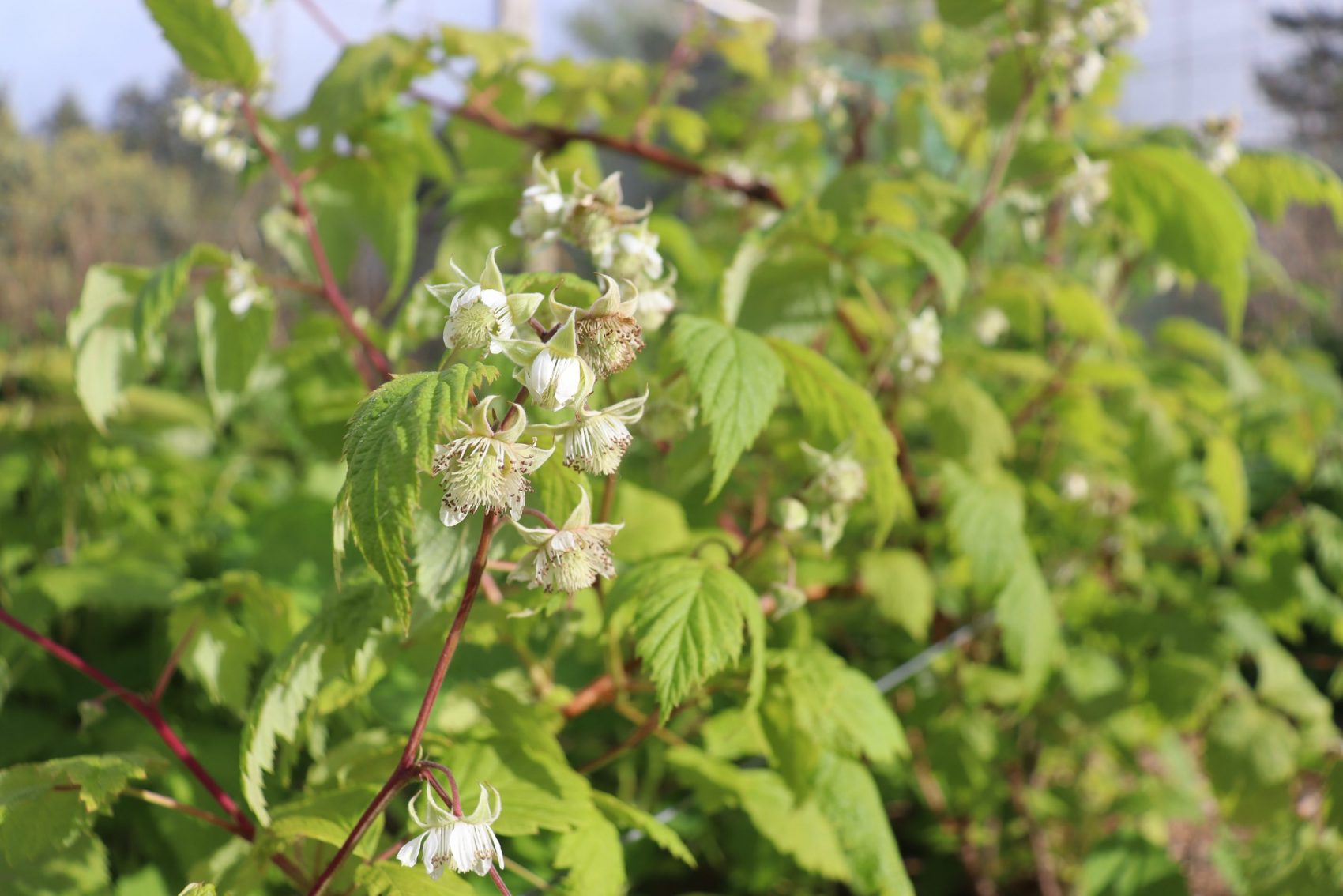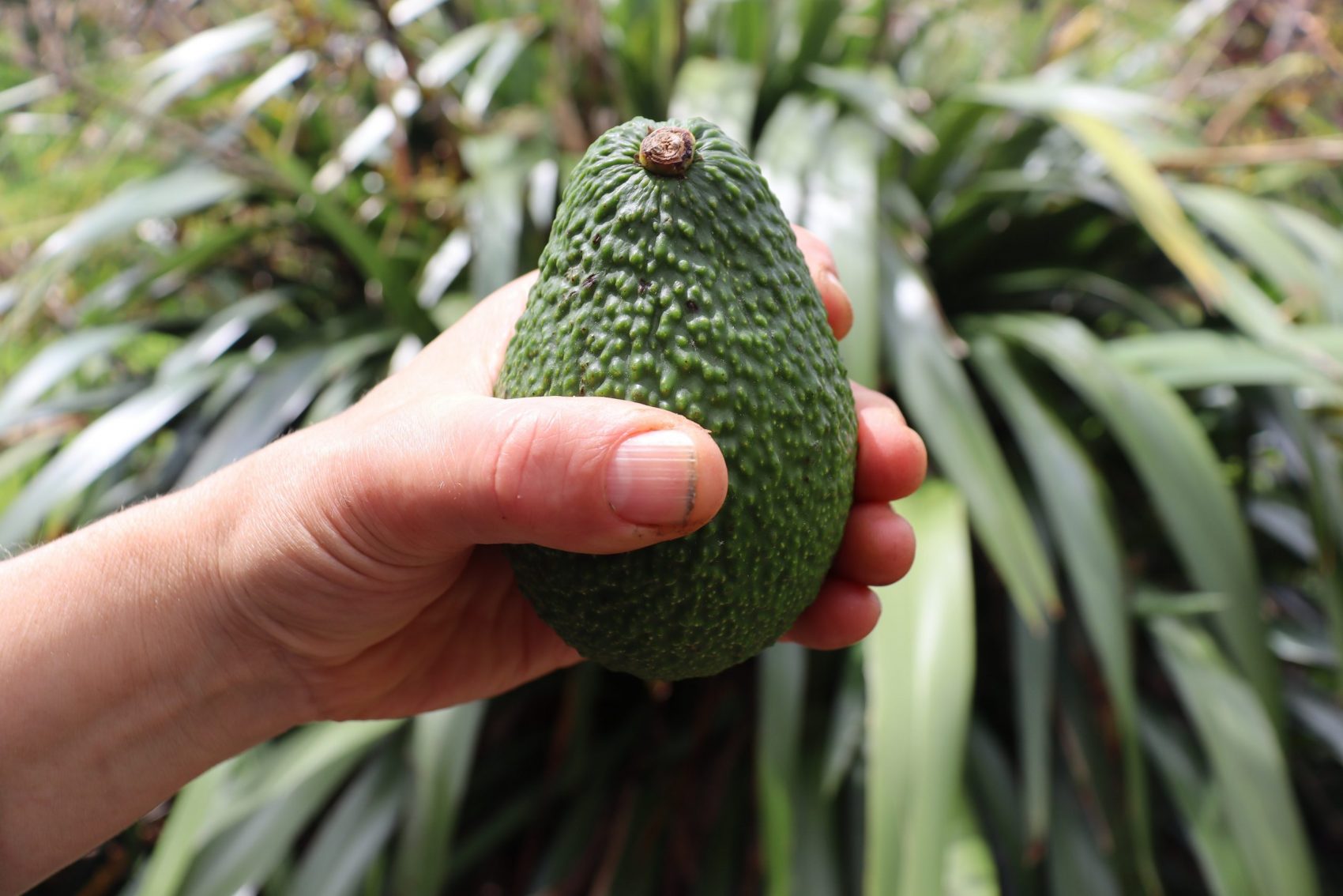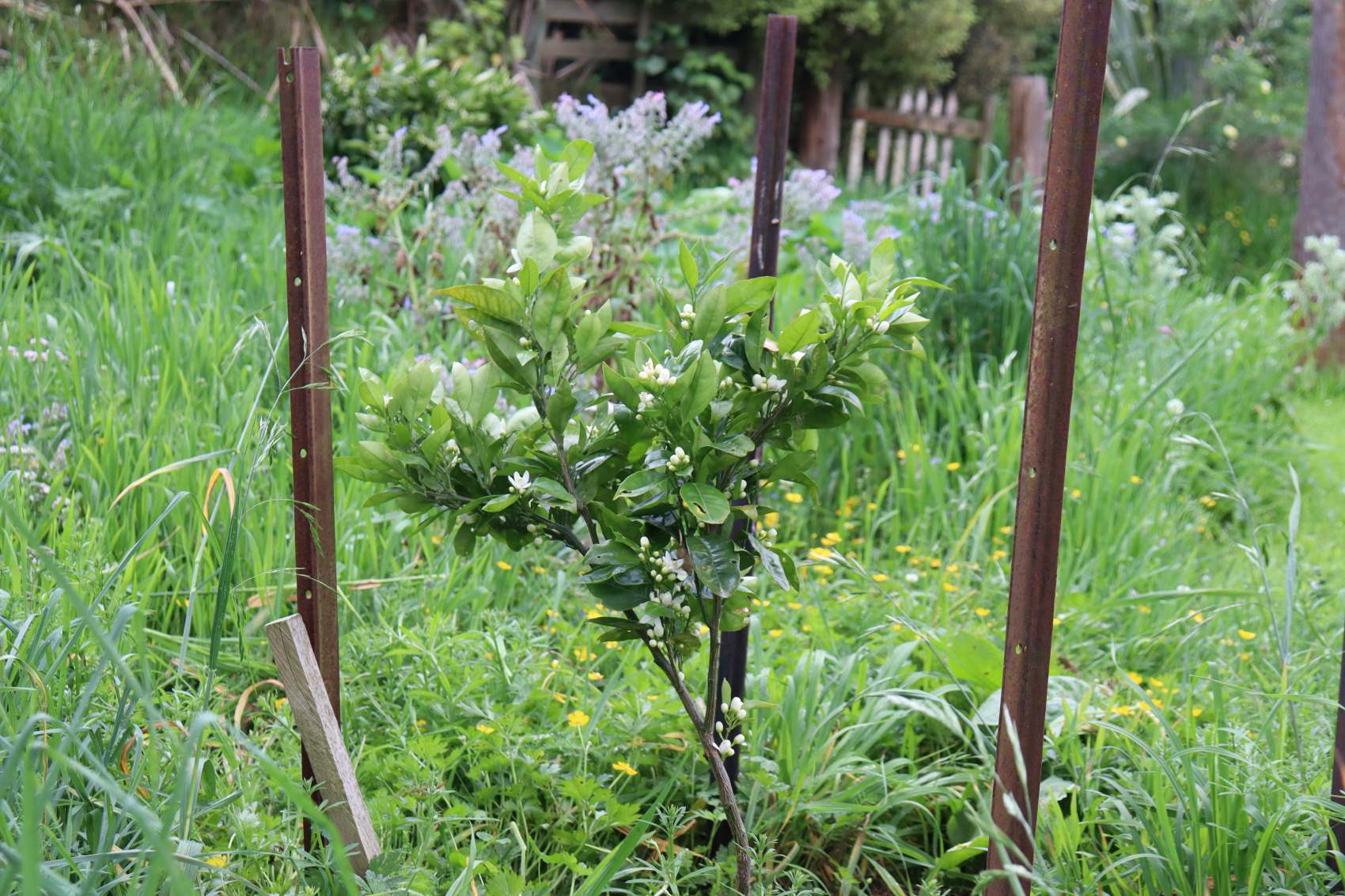November is when the summer fruits really get a roll on. Your daily (or every other day) walk saves the crop by alerting you to the first sign of birds (chuck a net on!), pests or disease, as well as any fruit thinning that needs doing.
- Catch green vegetable bugs early and they can easily be sorted with digital control (i.e. squashing). If populations are already large at this early stage, do a few, successional bursts of Neem, about a week apart. Otherwise, don’t spray – your garden is better off by far without it.
- Passionvine hopper juveniles – the white little fluffy bums – are best managed while young before they become impervious adults. A good case for Neem, if populations are usually large at yours. Get onto it now, and break the cycle.
Let the grass go

What an awesome habitat we give our fruit trees when we let the grasses and wild plants go. It’s a home coming for them to exist in a diverse, perennial groundcover.
Oh the life and health that comes when tops grow – that’s cos alongside tops getting taller and lusher – so too the roots. More roots = more soil biology. More soil biology = a larger, more diverse support network for your trees to tap into ergo better health by far and a lot less work for you.
Long grasses, weeds, herbs and wild plants also
- provide food and habitat for insects that are kin to your land
- protect and shelter young trees through summer – so much easier than building structures!
- aerate soil and improve drainage
Put away the mower and god forbid the sprayer and improve overall health in the simplest of ways – by letting your garden go.
Thin young fruits

Pears and apples are setting now and plums, apricots and peaches well on their way. Thinning is, ideally, on your mind. It’s an orchard job that I rate above nearly all others – the difference to your trees health, productivity and the quality of your crop is huge.
As fruits reach marble size – remove the excess in order to improve the remainder. It’s a quick easy job once you get the hang of it. If your trees are young or poorly, remove them all. Drop the thinning’s to the ground as you go, to return the carbs to the tree.
Berries

Raspberries + Blackberries
- Attach fruiting canes to the frame/ wires, and check in on bee activity. If bees aren’t busy what can you do to entice them?
- Are your berries mulched and summer ready? A mixed, mature (ie not hot!) woodchip is ideal here.
- Be ready with bird protection – the first raspberries will be ripe soon enough.
Strawberries
- Pluck off the flowers of any tiny plants so they can instead, put their energy into growing a bigger canopy. Let a generous rosette of leaves establish before letting flowering commence so that the plant has more resources. This means more + better fruits, and fruiting will go on longer.
- If you haven’t already, spread well rotten manure, or homemade compost at their base and top it off with a mulch so as to keep the fruits clean.
- Set up cloches or a simple frame that net can be draped if you don’t have a berry-house. Whatever you create, be sure you can access the crop easily on a daily basis once fruiting begins.
Disease check

Keep an eye out for disease – blistering leaves, holes, discolourations – just in a relaxed, noting it, kind of way.
Before you reach for google + a complicated diagnosis, check in to be sure the basics of fruit tree health are being met and that the variety is well suited to your place. Peaches, for instance aren’t beloved of my high spring rainfall, heavy clay combo. I grow them, but accept all the fungal issues as par for the course and every now and then when spring is dry (hallelujah!) we get to eat rot free peaches!
New trees and/ or new orchards are more susceptible to disease. Be patient – continue to work away at your healthy fruit tree game plan, and in time, all will be well.
Don’t rush in with so called instant fixes and/ or feeding if feeding isn’t required. Too much is worse than too little.
Take a photo each week, as the disease progresses. That way you can clearly speak to the whole process if things worsen and you need to seek advice. Most issues are poor variety choice, a poorly chosen site, extreme weather or a young tree with teething trouble. Either way, focus on building an awesome environment, not so much the disease.
Harvest Avocados

Avocado season is in! Pick them with a bit of stem in tact for long keeping. And no need to pick them all at once, they hang beautifully on the tree.
Choose the fattest ones. Hold an avocado round its widest bit, its belly – and when there’s a goodly gap between thumb and fore finger, pluck them off with some stem intact.
Harvest as many as you’ll eat in a week. Do this each week and this way you’ll always be walking into ripe avocados – what a treat! As the weather warms, the length of time it takes them to ripen speeds up. Last month they were buttery and black in 14 days and now they’re taking about 10.
I keep some in the cool of the pantry, and some on the table where its warmer – in this way we stagger the ripening.
Plant Citrus + Avocados

Its a great time to plant heat loving subtropicals -like avocado, tamarillo, passionfruits and citrus.
Citrus and subtropical’s hate the cold, which is why we delay planting new trees until weather settles and soil warms. This way they’ll flourish in their first season, stretch their roots out and are well settled in before having to tackle their first cold season.
Prune Tamarillos
Such floppy, breaky trees! Strengthen your Tamarillo and create a robust, stocky shape with a good spring prune. This is especially important if your tree has to cope with wind.
Biological sprays
Give fruit trees, and indeed your whole garden a biological spray. A coating of beneficial fungi and bacteria to promote diversity, immunity and all round strength is a great tonic for young orchards. As your naturally healthy orchard establishes, the need for these sprays ebb away. It’s all about who fills the space – simple as that, so load your trees up with the good guys!
Odd jobs
- Tie new growth of grape vines and espalier onto wires
- Spray Bt for raspberry bud moth caterpillars
- Check soil moisture around young trees and citrus. Water if needed.
- Chop and drop groundcover plants and support trees, to boost biology and improve light and airflow.


